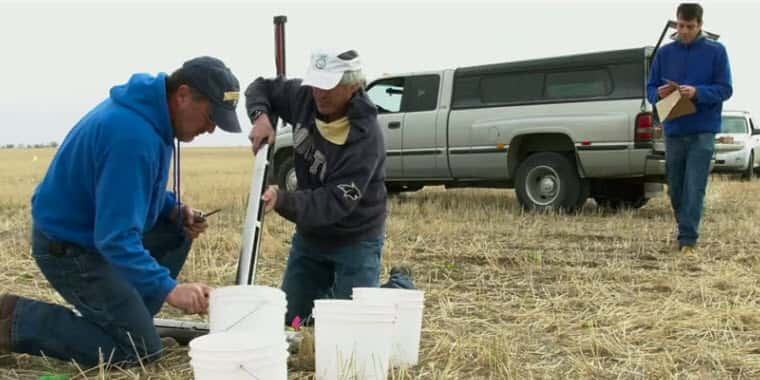“This was a landmark study because we knew we were losing nitrogen, we just didn't know how we were losing it,” says farmer Curtis Hershberger.
An on-farm study lead by Montana State University Soil Scientist Richard Engel and funded by SARE has shed light on the urea fertilization practices that are most susceptible to nitrogen volatilization. The team also studied nutrient losses from a green manure cover crop. They developed recommendations that have improved the sustainability of wheat farms across Montana. As a result of this work, farmers statewide are saving an estimated $5 million per year in improved nutrient use efficiency and crop yield.
For the study, the research team determined the fraction of applied urea fertilizer lost as ammonia gas when applied to winter wheat from late-fall to early spring (see ammonia gas collectors in the field at the video's 2:30 mark). Based on their findings, they recommend against surface-applying fertilizer to frozen or wet ground, particularly in the winter, and instead to apply it in the spring on dry ground a day or two before significant rain. They also recommend subsurface applications and the use of urease inhibitors.
Want more information? See the related SARE grant(s) SW10-050, Enhancing Cropping System Sustainability by Minimizing Ammonia-N Losses from Biological and Chemical Inputs.
Source: Western SARE




